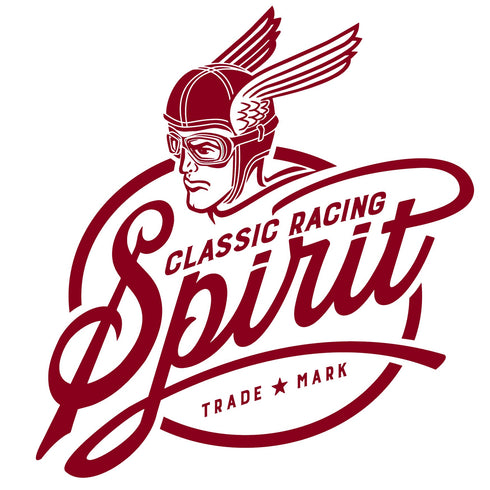Considered one of the best French racing drivers of the 1950s but largely unknown today, Claude Storez was most accomplished in endurance racing and long distance road rallies. Tipped for even greater things, Storez was tragically killed 62 years ago this month going all out at Reims in his Porsche Zagato, whilst chasing down the race leader. This is his story.
Claude Storez was born in Paris on 7 November, 1927 and began motor racing aged 22 alongside his father Léon who was already an amateur racer. They entered their Simca Sport into road and track endurance races like the Tour de France Automobile and the Coupe du Salon but with limited success.
Within two years though, Claude was a team driver for Deutsch-Bonnet (DB) and paired with Marc Gignoux for the 1953 24 Hours of Spa-Francorchamps where they came in 4th and then finished 5th in the Tour de France of the same year. In 1954, Storez continued with DB; competing in the Mille Miglia but finishing well down the field and then the 12 Hours of Hyères coming in 7th.
For the back half of 1954, Claude switched to driving a Porsche 550 RS Spyder, coming second overall in the Tour de France and winning the 1.5-litre Sports car class. His next big race was the Coupe du Salon at Montlhéry, where he was runner up in class behind none other than Stirling Moss.
During his 1955 season, Storez alternated his drives between DB and Porsche, but it was the Spyder that gave him most podium successes; placing third in the Grand Prix of Agadir in Morocco, winning at the Circuit de Dieppe, runner up at the Grand Prix of Bougie in Algeria and another third at the Grand Prix of Tunisia.
From 1956 onwards, Claude drove only for Porsche. Again mostly the 550 RS Spyder in which, among other successes, he won the 1.5-litre class at the 12 Hours of Reims. Storez also campaigned a Porsche 356A Carrera in occasional Touring and Grand Touring races. In these races Storez was teamed up with co-driver Robert ‘Bubu’ Buchet in what would become a very successful partnership; winning a dozen first-class events over the next two years including the 1956 Rallye des Routes du Nord, Rallye d’Armagnac and a class win in the Liège - Rome - Liège.
In this last long-distance race, his 356 Carrera Speedster came second overall to a much more powerful Mercedes-Benz 300SL. The following year, Storez and Buchet won the same race outright, this time beating the 300SL of Jo and Annie Schlesser. Two more class victories came in the 12 Hours of Reims in ‘57 and ‘58.
In the mid-fifties, Italian carrozzeria Zagato were modifying a number of GT cars for racing, making them lighter and more aerodynamic and ultimately more successful in competition. Notable models included the Fiat-Abarth 750 GT Zagato and the Alfa Romeo Giulietta SVZ.
With an eye on this success, Claude Storez bought a Porsche 356 Carrera Speedster and had it sent to Zagato in Milan for modification. Working with Porsche in Stuttgart on the mechanicals, Zagato delivered back to Storez a much reworked streamlined body with fins on the rear wings. Immediately it proved competitive, finishing second at the fast Reims circuit stage of the Tour de France behind the eventual overall winner Olivier Gendebien.
Just a few months later, on Saturday 7 February 1959, Claude Storez was back at Reims, lining up in his 1.5-litre Carrera GT Zagato on the front row of the grid alongside the much more powerful 3.0-litre Ferrari 250 GT of Pierre Noblet, for a speed stage of the Rallye des Routes du Nord.
Storez got away in the lead but as he began to climb towards Muizon he was overtaken by the Ferrari. Once on the long downhill straight, Claude’s Porsche Zagato was back at full throttle, chasing the 250 GT and pulling away from the rest of the field. Keen to stay in touch with Noblet, he braked late and hard for the Thillois hairpin.
Running some way behind Storez, who would have been travelling at close to 125mph, Gonzague Olivier recalled seeing Claude’s brake lights flash and his Porsche immediately veer to the right, ramming the slope and launching into the air, rolling several times. Storez was thrown from the car which eventually came to rest 100m away.
A Gendarmerie helicopter landed quickly after the crash, picking up the unconscious Claude. He had suffered a broken skull - his helmet had been stoved in - and an open hip fracture. Claude Storez died in hospital half an hour later without regaining consciousness, he was only 31 years old.
The exact cause of the accident was never determined but the press at the time reported that Storez had damaged the front right corner of the car the night before which could have caused a fatal weakness.
Storez was clearly a gifted racing driver in endurance road races - although never having had much luck at Le Mans - but, had circumstances been different, he could also have shone in single-seaters. He had finished 5th in the 1958 Formula 2 Auvergne Trophy race at Clermont-Ferrand in a Porsche 550 RS and may have gone on to Formula 1.
Claude Storez was considered one of the best French racing drivers of his time; incisive and courageous with precise and thoughtful driving. In his obituary, published by “L’Automobile”, he was described as “Un prince du volant” which can loosely be translated as “A prince among racers”.
For many years, all that was left as his legacy was a complicated double right-hand curve on the Nogaro circuit bearing his name. That is until 2015 when Zagato unearthed the original Storez design sketches and built a limited run of 9 Porsche 356 Carrera Speedster Zagato continuations.

